Become The Buzz
A lot has been written about all the ways you can get buzz for your business from putting discounts on your Facebook fan page, to reaching out to mommy bloggers, to offering Groupons.
You don’t get buzz by being Santa Claus with your marketing dollars. The way you get buzz, buzz that is sustainable and leads to higher profits, is to be a business worthy of buzz.
That means you have to earn it.
My First Client
This is the story of my first client, Polly’s Gourmet Coffee.
In the late 90s, it was commonplace to read about the big-boxes putting many small shops out of business. From the arrival of the Home Depots that threatened the small hardware stores, to the Staples that were putting office supply businesses under, the media was salivating for the “going under” stories.
It was easy to paint a picture where our choices would become limited and where there was no room for the individual customer or businessperson.
That’s why, with a stagnant economy, the story about a possible second Starbucks going in about 100 feet from Polly’s Gourmet Coffee, who had been in Long Beach, CA, for 20 years, got ink.
Editorials were written decrying the death of the independent; worried letters to the editor were published about losing the smaller retailers, but the lease for the second Starbucks was signed and their opening date announced.
I had to see what all the “buzz” was about.
I visited Polly’s on a chilly, January night and found the place a mess. The trash hadn’t been emptied, the patio was dirty, the creamers were empty, the merchandise was dusty, half the overhead light bulbs were burnt out. You get the shoddy picture.
While I was waiting for my cappuccino, one of the employees told his co-worker, standing right in front of me, that he had written on an employment application for another employer that he was the Polly’s store manager, because, “… like who would check?” The other said that when the second Starbucks opened, “Polly’s is going to be gone.” That’s why he had his resume out, too.
When I met owner, Mike Sheldrake, the next week, I asked him, “What are you going to do when that second Starbucks opens up?” He answered, “I’m going to send them back to Seattle.” I replied, “And how, exactly are you going to do that?” Mike took off his glasses, looked back to the coffee roaster and said, “I haven’t got a clue. Where do I sign?”
Getting To Work
Mike was one of the founding members of the Specialty Coffee Association (SCAA). People from around the country came to Mike to learn how to roast coffee in their own coffee houses. Customers from around the country came to swap tales with Mike and share a cup of coffee while gleaning some of his tasting secrets. Mike was the rock star of the coffee world.
In spite of that, I learned that Polly’s was hemorrhaging cash. We needed to turn the negative buzz about his viability around if he was to stay in business. And quick. Polly’s had been losing about 10 percent each month from the previous month since the first Starbucks opened 10 blocks away.
Mike’s sleepy coffeehouse was ready for a reboot.
Lesson: Your garden center may already have buzz others have created for you as a loser or place to avoid. With social media like Facebook, Yelp and Google Reviews you can get a bead on this fairly easily.
The Challenge
We were going to drive the Polly’s story we wanted to tell a tale of success, not a tale of woe.
But we had to get the buzz right with the customers first, then amplify it with limited marketing like paid ads, brochures, direct mail and bumper stickers.
I sat in front of the counter one day and acted like I was working on my laptop. I clearly saw and heard people ordering drinks and bakery items. The coffee order was called out but as the cashier placed a bagel or other bakery item in a bag, only the coffee was rung up. Happy customers were putting large tips in the tip jar. By the end of the shift the tip jar was filled with lots of $5 bills. These employees were raking it in, and all at Mike’s expense, because most of what they were collecting should have been his.
A meeting was held at a local restaurant. I put up a picture of the Titanic. When everyone was seated, I subtly announced, “Ladies and gentlemen, we’re on the deck here and it’s not going down on my watch. I know you’re stealing from Mike and that stops right now.” Two girls got up and said I couldn’t talk to them that way and stormed out the door. Sensing that I was usurping Mike’s familial relationships with them, another got up, started to cry and said, “You can’t do this Mike! We’re family!”
Mike acknowledged her feeling but said he brought me in and this is what he was going to do, right or wrong.
The next week we saw sales rise 11 percent.
Lesson: Look to your own crew, facility and customer experience first before you ever try to get buzz in your marketing. You don’t invite people to a garden party that’s
no good.
“In The Know”
We had to give customers something to talk about because being “in the know” made them more interesting to their friends. When those “in the know” customers brag about an establishment, those friends and family naturally believe. It is the heart of word-of-mouth marketing.
Mike’s ads in the local community paper were small, but because he had purchased them weekly from the outset twenty years prior, he enjoyed premium page-three placement. We tripled his ad size but discontinued the discount coupons that blended into the other clutter. Those discounts had only added to his debts.
We were going to raise prices and make everyone pay their
fair share.
Lesson: When you feel discounts are the only way to bring people in, you are often blinded to why you are not attracting people to pay full price for your garden center products.
Picking The Fight
We had to stand out. To pick a fight. To define Starbucks on our terms, not theirs. While Starbucks had brought specialty coffee to the masses, they were not the same as a shop that roasted coffee every morning; who carried more exotic blends and sourced coffees among the best; who had beans so fresh they were still warm when you purchased them.
The tag line was created, “Down the street from Ordinary.” Unless we changed buzz from “Oh, poor Mike” to “Winner,” we couldn’t drive trial of Mike’s products.
Instead of pitching everyone to try our fresh roasted coffees, which really didn’t translate on the page, we’d take advantage of his relationship with the local paper. We would run a different ad each week. We’d have “fresh content” that mirrored Polly’s fresh-roasting their coffee daily.
We used direct mail extensively five miles around the shop. And it was based on emotion and having fun, never discounts. The first example was a shot of Mike in front of the coffeehouse with the quote, “Rumors of my death were greatly exaggerated. – Mark Twain 1888, Mike Sheldrake 1999.”
Lesson: Crafting your business as the angel to a competitor’s devil can galvanize response from loyal customers and give you a wealth of possibilities to explore.
Upgrading The Business
We purchased new patio furniture to place on the newly enlarged city sidewalks providing more places for our customers. Nothing attracts people like seeing a busy shop.
To build buzz in the neighborhood, we created a contest for an entirely new brand of coffee cups that had the coffee jacket in between the liner and the cup. This meant you didn’t have to double cup hot coffee and provided a backdrop to custom print our own design.
We wanted local artists to create iconic paper cups that would immediately show the bearer as “in the know” and spread our message. We wanted our customers to become our sales people via the unique coffee cups as they walked around the neighborhood. We wanted the employees to talk up working at Polly’s as a warrior not a survivor or worse.
To build more community, we formed a panel of judges made up of the dean of the art school from the local university, a variety of business leaders, as well as our own customers. This was an early example of crowd-sourcing back in 1997.
Since our customers contributed to the success of our outcome, our iconic artwork was going to be chosen by them. If we succeeded, so did they. One of the final designs featured a coffee-colored collage of photos of Mike, the crew and the coffee roaster. We liked it so much, it was also made into T-shirts fans could purchase.
Lesson: Involving customers and your community in your business builds the web in a very real way. Facebook can help, but it is still the feeling the customers have when they are in your garden center that will determine whether they want to stay involved with you online.
Merchandising To Sell
The roaster was repainted navy blue and additional lights were added to draw attention to it. Brochures were created to describe the taste profiles of each roast, blend and strength of coffee.
Dull 25-watt light bulbs in the vintage-stained glass lamps were refitted to 150-watt lights to shine brightly. Additional lights were added to shine from inside the store out onto the sidewalks to make the store stand out at night.
The counter areas were moved and display areas were added with various heights. Jamaican Blue Mountain coffee, a $50 per pound roast, was packaged into blue foil single-pot servings and featured at the register along with new custom red-logo mugs.
The most expensive coffee machines were displayed complete with beans and signage easily explaining why the $300 model was the best and what to be wary of in cheaper models.
Sales were climbing…
Lesson: Organizing your nursery products and increasing the light levels in your garden center are what promotes discovery of your products and spotlights unique features and your most expensive items.
Upgrading The Crew
I personally interviewed every one of the applicants. Since all but one employee had quit or was let go, we were able to start fresh and create an exceptional coffee culture.
A comprehensive sales training program was developed. It took Mike’s passion and comprehensive knowledge about our coffee and culminated with a 100-point test to certify all employees knew what they were talking about.
We hired a mystery shopping company to independently judge how well we were delivering an exceptional experience. Our last questions were the heavily weighted: “Would you drive past a competitor to come back to Polly’s?” and “Would you go out of your way to tell friends and family about Polly’s?”
We started free Coffee 101 events where Mike shared his knowledge about coffee, from how to grind it to how to brew the perfect cup. The store was packed with novices who wanted to learn from the expert. We added Coffee 102 that covered espresso drinks.
Clearly something was going on at Polly’s.
Lesson: Until you get the crew up to speed so that customers will figuratively crawl over broken glass naked to come back for that experience, your marketing means nothing. You have to wow them first.
The Results
Polly’s saw a 52 percent increase in sales the first complete year of the program, with another 40 percent increase in sales on top of that the following year.
What would a publicly-traded, world-class business care about one little coffee house in Long Beach? A lot, I guess, for I was told much later that a regional Starbucks guy had gone to the local paper and asked to see every one of our ads.
We had good buzz, they didn’t.
I have to acknowledge that an awful lot of things happened to make this success, beginning with the fact that Mike had a great product and he himself was a great character to market.
Without that basis, all the buzz we were after might have backfired.

What sets your business apart from others is the very thing that sets you up for retail success. Need proof? Just look at the story of Polly’s Gourmet Coffee.






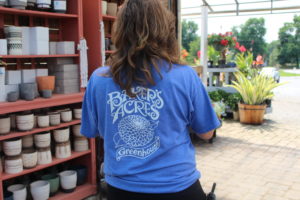
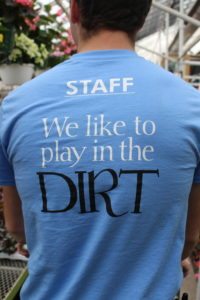
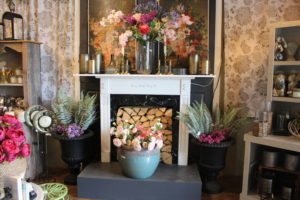
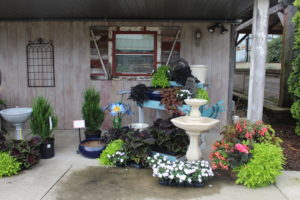
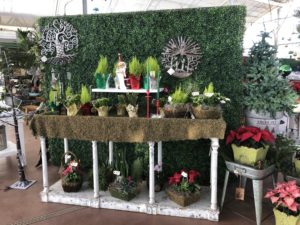

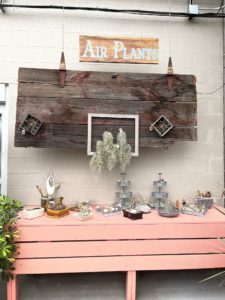
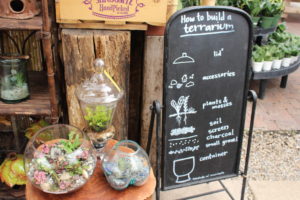
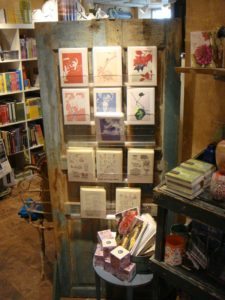
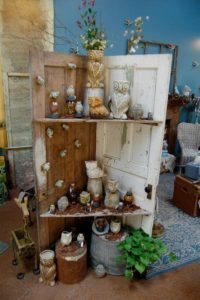

 Videos
Videos





